Gallery Network
At Verona’s Studio la Città, Visitors Go ‘Behind the Curtain’ of Dynamic Curatorial Duo
The sweeping group exhibition is the result of an experimental dialogue between Hélène de Franchis and Luca Massimo Barbero.
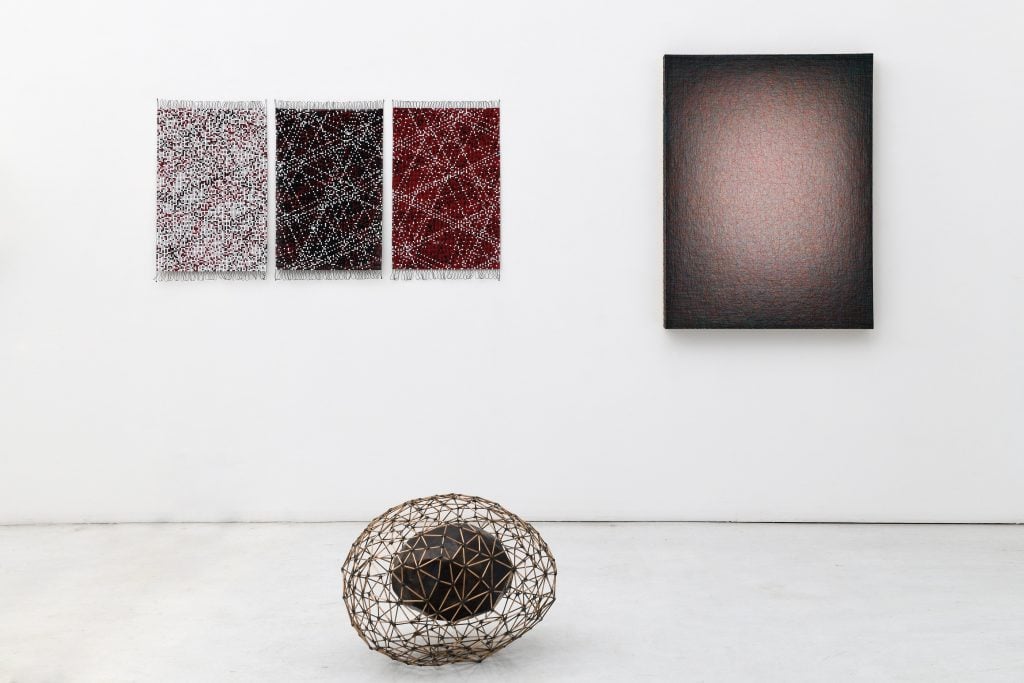
The sweeping group exhibition is the result of an experimental dialogue between Hélène de Franchis and Luca Massimo Barbero.

Artnet Gallery Network

On view through June 1, 2024, Studio la Città is staging a multi-floor exhibition with an innovative and experimental take on curatorial dialogue titled “Torn Curtain: Buongiorno, buonasera.” Located in Verona (only about two hours by train outside of Venice if you are visiting the Biennale), Studio la Città invited Luca Massimo Barbero and Hélène de Franchis to engage in a ‘curatorial duet,’ the product of a creative back-and-forth wherein each responded to and developed the exhibition. The result is a revelatory, winding exhibition that leverages the unexpected.
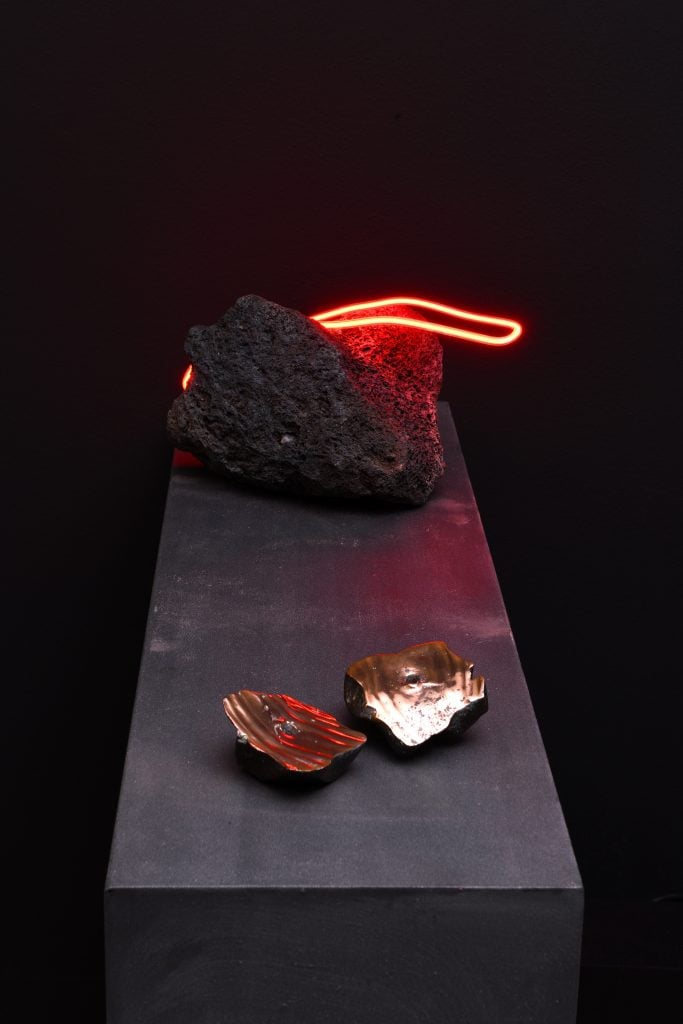
Top to bottom: Arthur Duff, Untitled (2023). Lucio Fontana, Concetto Spaziale Natura (1963). Photo: Michele Alberto Sereni. Courtesy of Studio la Città.
Barbero, who is an author and art critic as well as curator, and de Franchis, founder of Studio la Città, have maintained a long-standing art world friendship, and “Torn Curtain” offers visitors insight into each respective curator’s approach as well as their dual creative vision. Their collaboration and friendship began on a rocky note. In the 1970s at one of the gallery’s first spaces, Barbero touched a small, 1963 Natura by Lucio Fontana, playfully making the two halves touch. De Franchis threw him out of the gallery, but Fontana ultimately became a cornerstone of Barbero’s studies and career.
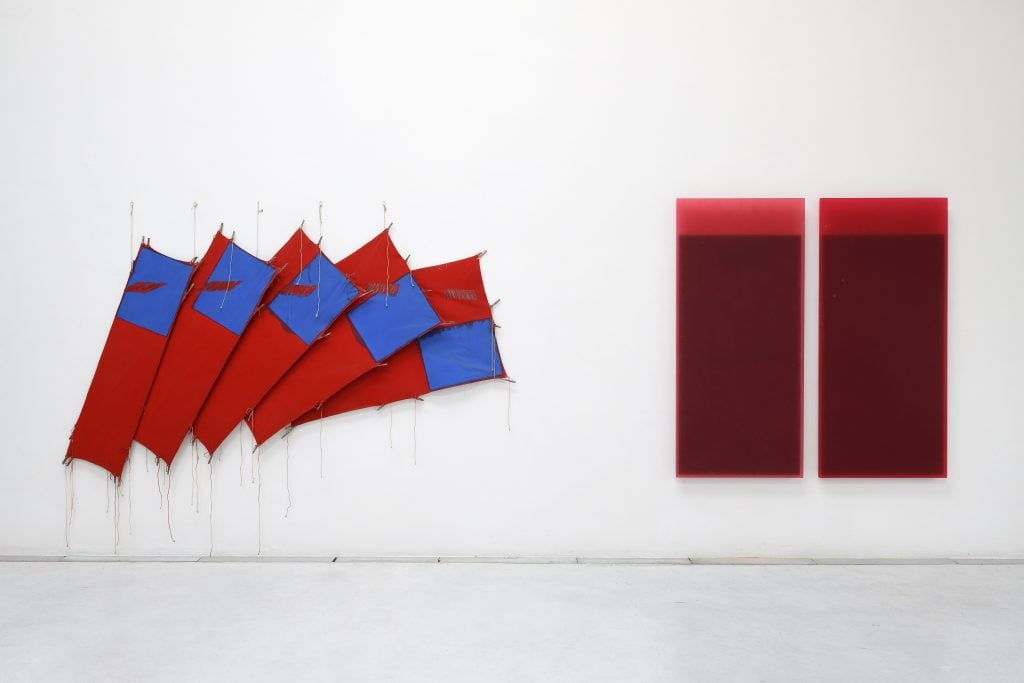
Left to right: Richard Smith, Working Week (1979). Herbert Hamak, HOSTAPERMROT PV19 (2005). Photo: Michele Alberto Sereni. Courtesy of Studio la Città.
The show opens with an actual curtain, made from a drawing by Venetian artist Alvise Bittente, and within the opening gallery Fontana ceramics are juxtaposed with an Indian ink piece by Alberto Martini dated to the 1920s, as well as 19th century photographs, a 17th century sculpture by Orazio Marinali, and a 2023 neon and lava rock sculpture by Arthur Duff, demonstrating the breadth of artists and media on display.
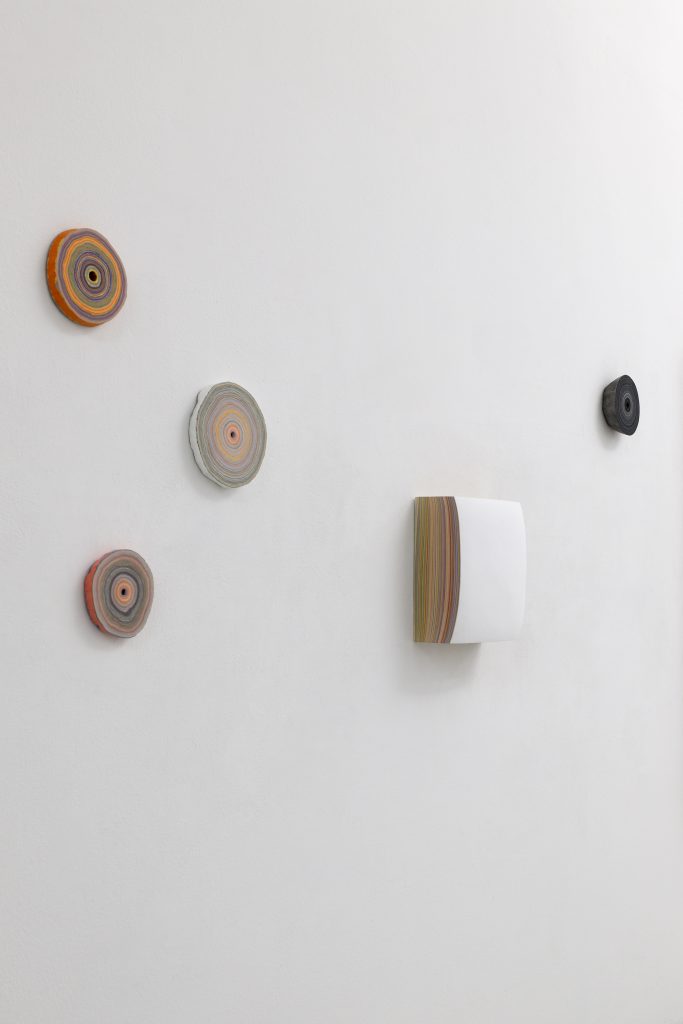
Installation view of works by Diego Soldà. Photo: Michele Alberto Sereni. Courtesy of Studio la Città.
Across the entire show 118 works are featured—ranging from images by fashion photography icon Richard Avedon to a Soundsuit (2010) by contemporary artist Nick Cave, watercolors by Diego Soldà to hand-painted ceramic vases by Runo B. The selection of artworks were chosen through a process of intellectual association and unhampered creativity. The exhibition culminates with a neon sign, and inspiration for the shows subtitle, reading “Buongiorno, bounasera,” based on a drawing by Cuoghi Corsello.
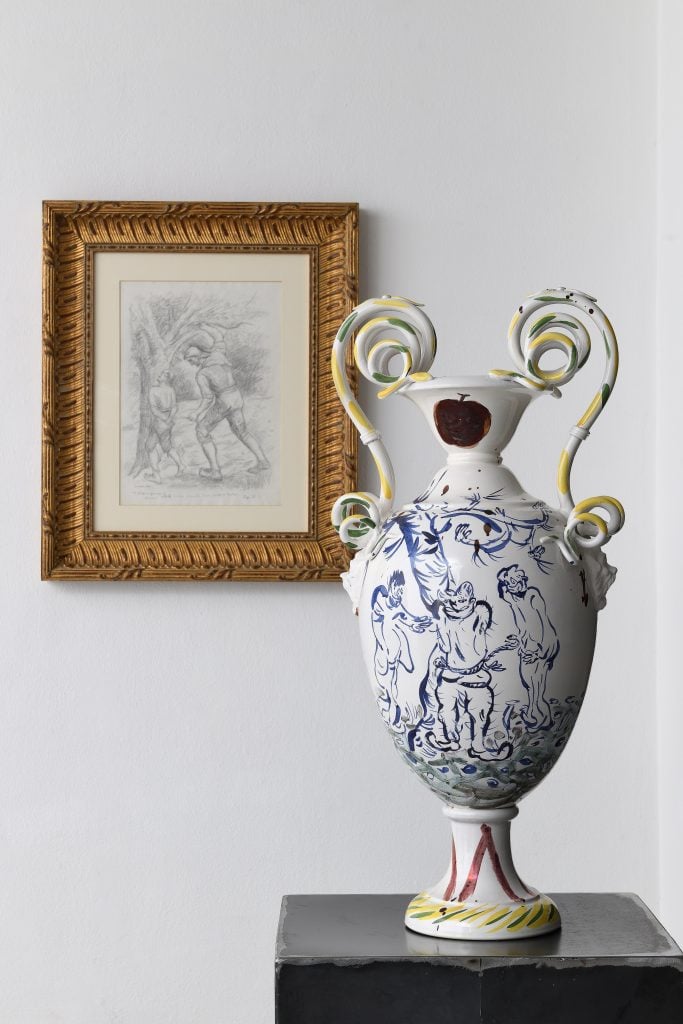
Left to right: Carlo Carra, Il garzone percosso IV (1944). Runo B, Beyond Illiterates white ball (2023). Photo: Michele Alberto Sereni. Courtesy of Studio la Città.
The artworks highlighted in “Torn Curtain” come from across time periods, genres, and styles, exploring not only the art itself but the unique dual-curator voice of Barbero and de Franchis, and it is an almost certainty that no other show is like it.
“Torn Curtain: Buongiorno, buonasera” is on view at Studio la Città, Verona, through May 4, 2024.